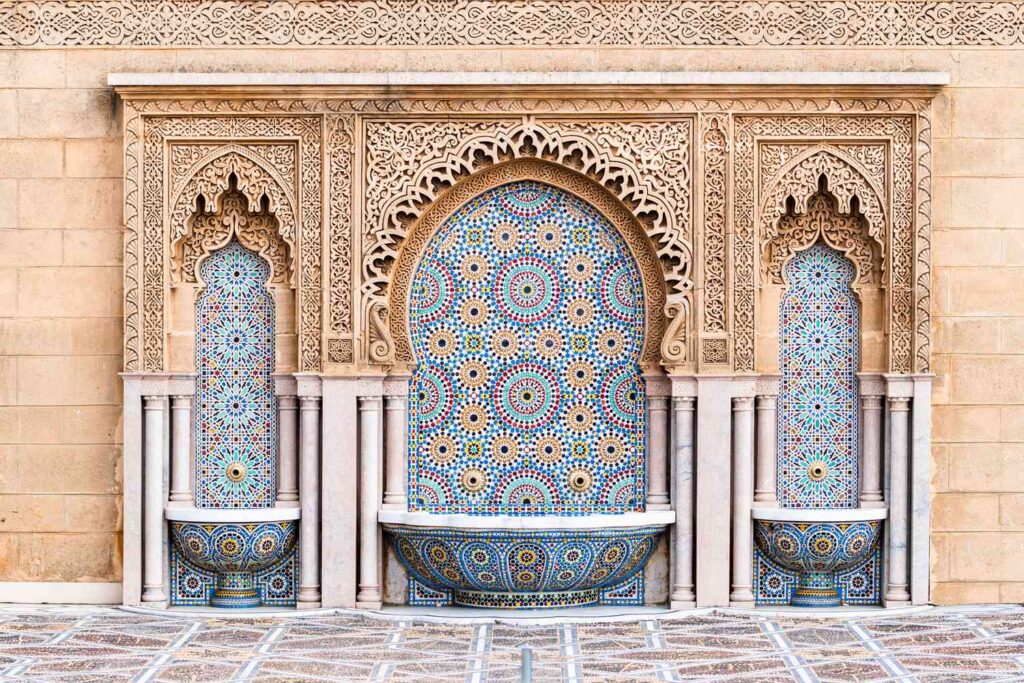Islamic Architecture, building traditions of Muslim populations of the Middle East and elsewhere from the 7th century on. Islamic architecture finds its highest expression in religious buildings such as the mosque and madrasah. Early Islamic religious architecture, exemplified by Jerusalem’s Dome of the Rock (AD 691) and the Great Mosque (705) in Damascus, drew on Christian architectural features such as domes, columnar arches, and mosaics but also included large courts for congregational prayer and a mihrab. From early times, the characteristic semicircular horseshoe arch and rich, nonrepresentational decoration of surfaces were employed. Religious architecture came into its own with the creation of the hypostyle mosque (see hypostyle hall) in Iraq and Egypt. In Iran a mosque plan consisting of four eyvans (vaulted halls) opening onto a central court was used. These brick-built mosques also incorporated domes and decorated squinches (see Byzantine architecture) across the corners of the rooms. Persian architectural features spread to India, where they are found in the Taj Mahal and Mughal palaces. Ottoman architecture, derived from Islamic and Byzantine traditions, is exemplified by the Selimiye Mosque (1575) at Edirne, Tur., with its great central dome and slender minarets. One of the greatest examples of secular Islamic architecture is the Alhambra. For full treatment of the subject, see Islamic arts.
Islamic Architecture

